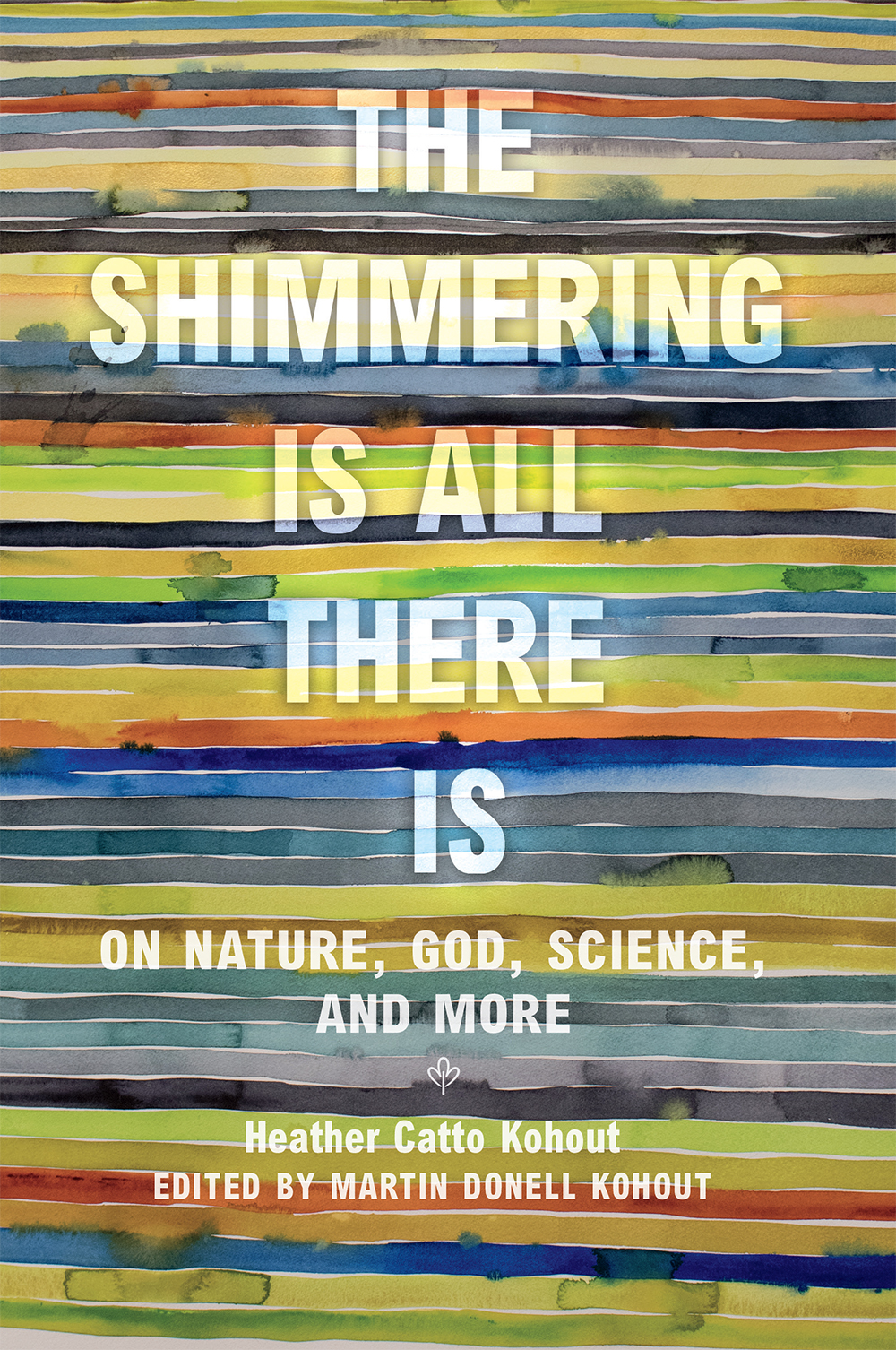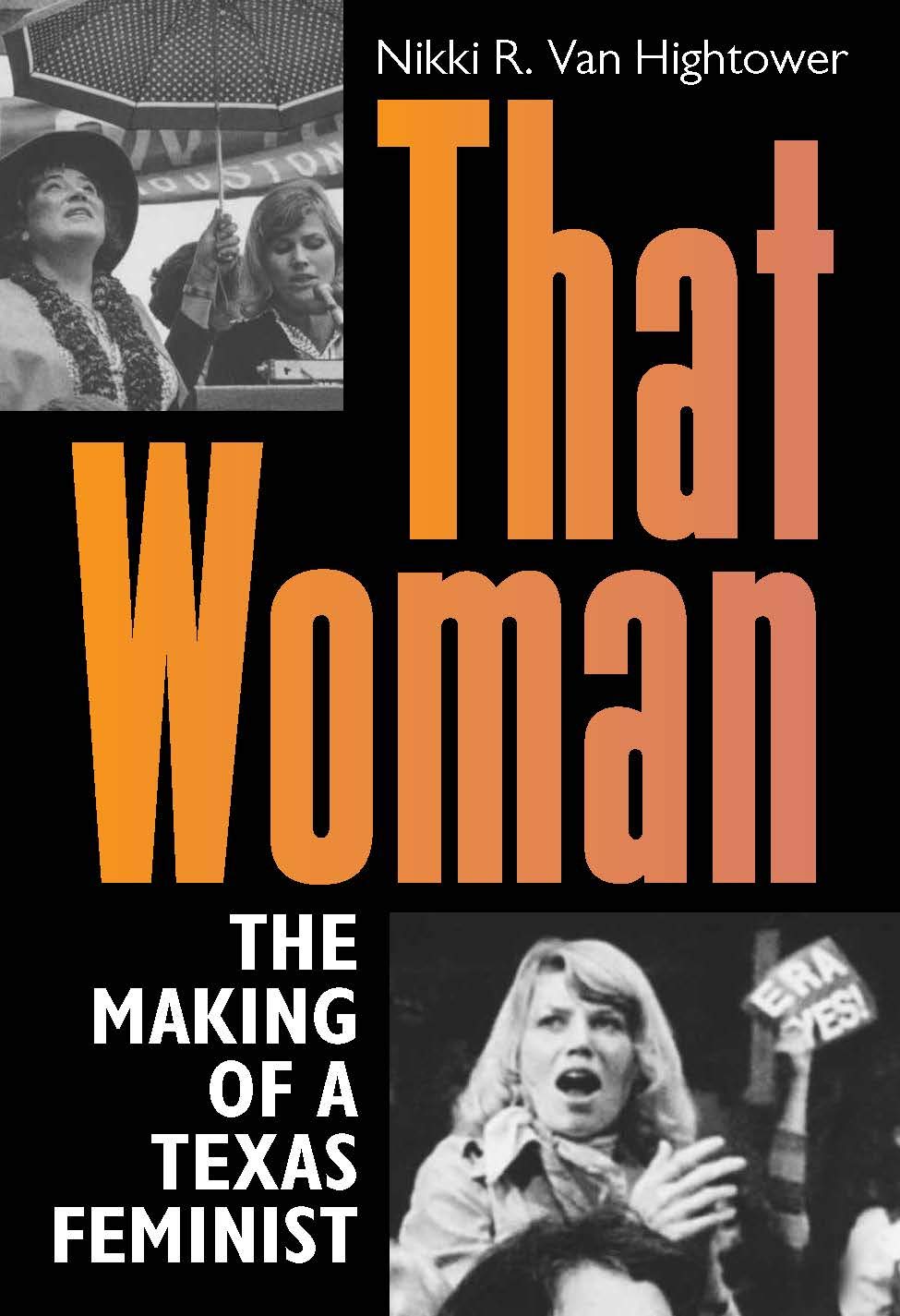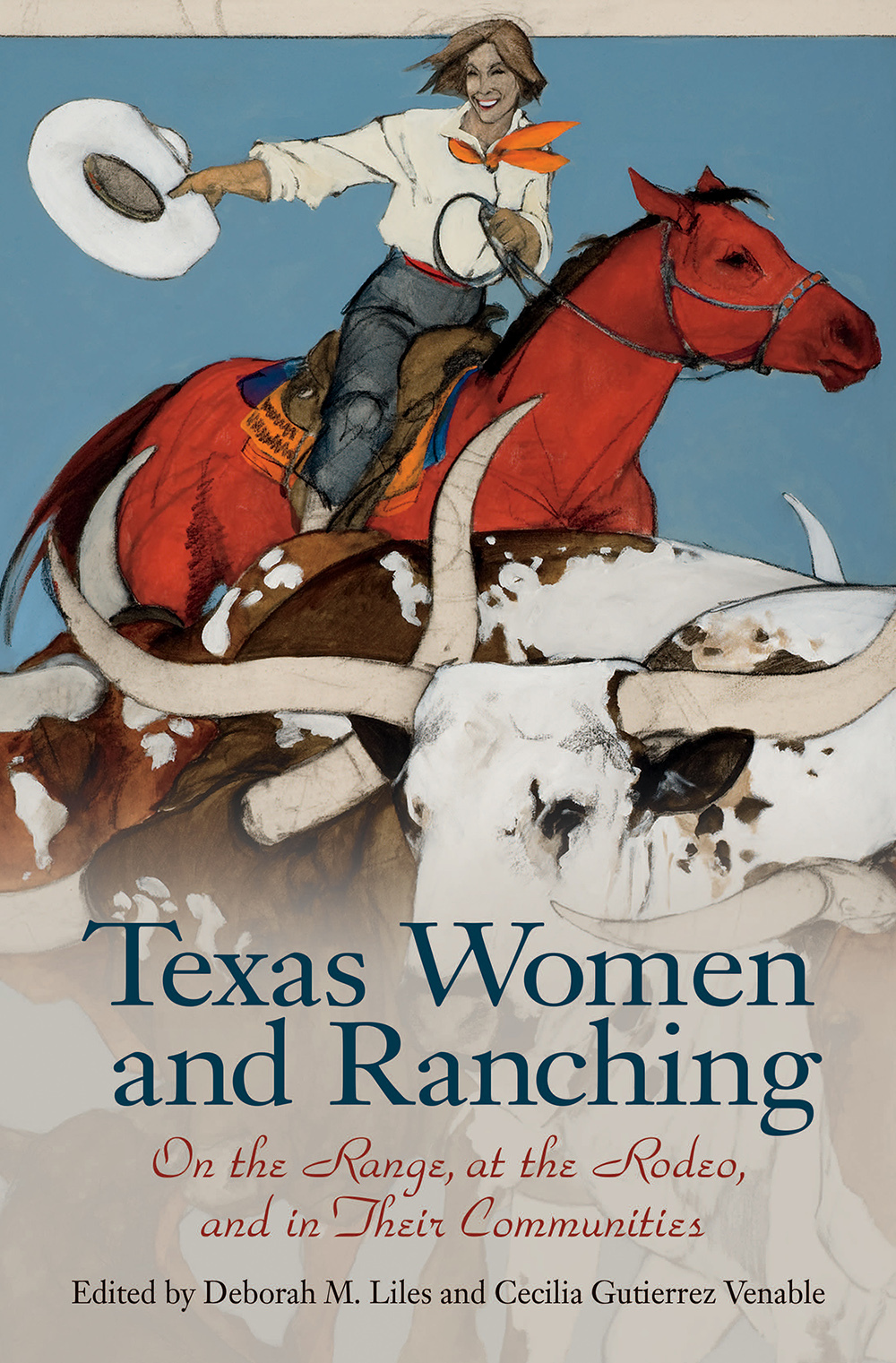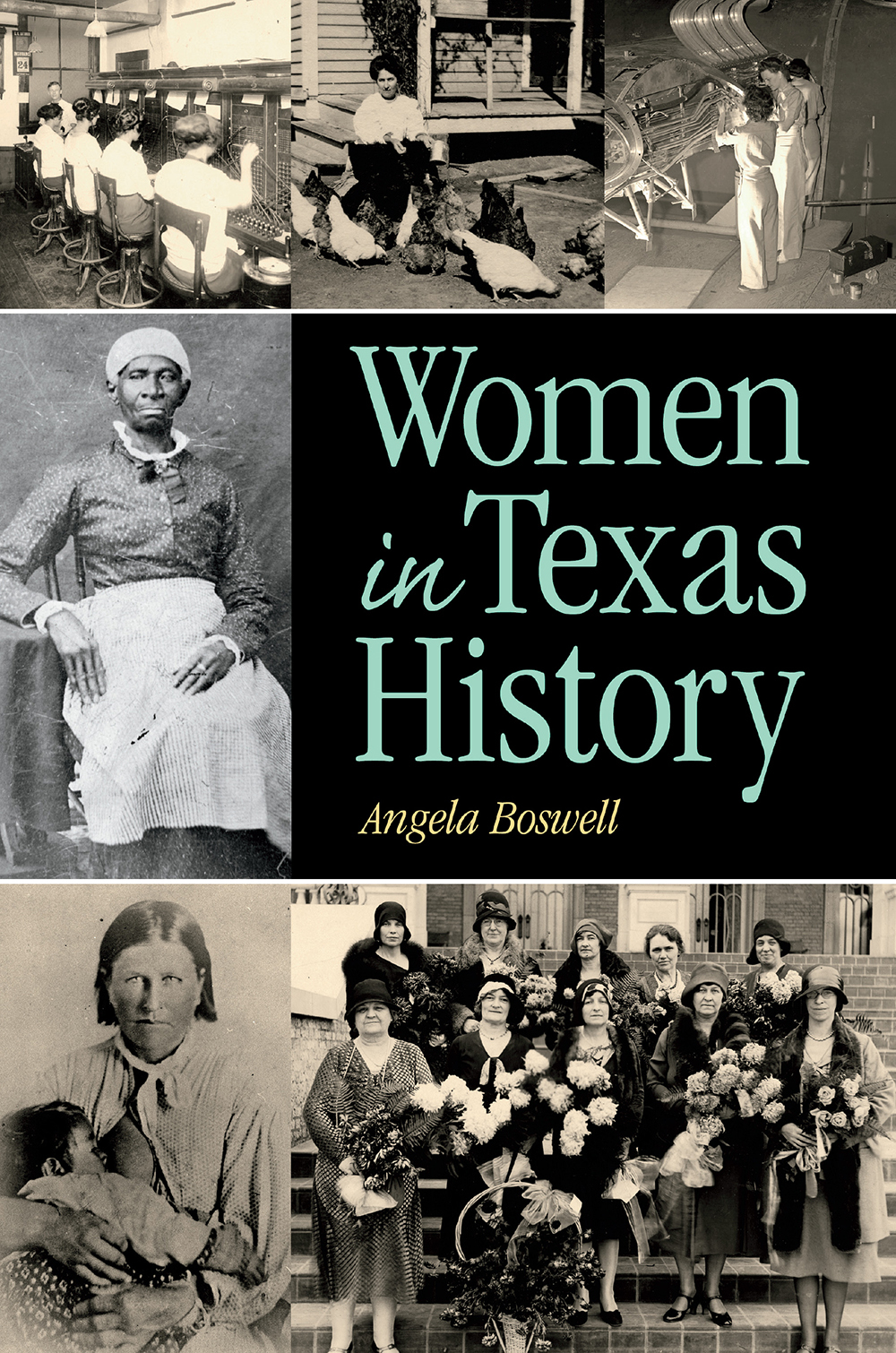


Women in Texas History Series, sponsored by the Ruthe Winegarten Memorial Foundation
Series · 6 books · 1988-2021
Books in series

#2
The Shimmering Is All There Is
On Nature, God, Science, and More
2021
The Shimmering Is All There On Nature, God, Science, and More is a collection of essays and poems by the late Heather Catto Kohout. A native of San Antonio, Heather was a disciplined and original thinker and writer. Her education, experience, and temperament—as a loving wife, mother, and daughter; a proud Texan; a teacher and scholar with graduate degrees in English literature and religion; and the founder of a residency program for environmental writers and artists at a ranch in the Texas Hill Country—permeate every word she wrote. She had a unique combination of empathetic imagination, profound spirituality, cosmic sensibility, and an ability to laugh—gently—at her fellow creatures and, especially, herself. Heather Kohout’s essays and poems are thoughtful, profound, and generous, shifting constantly between the specific and the universal and carrying throughout a message of stewardship. She was an environmentalist at heart, but her writing explores so much nature, art, theology, science, food, and family. She wrote about Mexican teenagers who dress as angels in an attempt to halt drug-related violence; the perils of industrial agriculture; the pleasure of letting the chickens out of their coop in the morning; and the battle to save the Georgetown salamander. Always, she wrote about what it means to try to live an ethical life and to be fully human as a part of, not in opposition to, nature. These essays and poems exemplify the best of Texas stubborn independence, fierce conviction, good humor, and instinctive generosity and kindness.

#3
That Woman
The Making of a Texas Feminist
2020
When Nikki R. Van Hightower stepped into the position of Women’s Advocate for the City of Houston in 1976, she quickly discovered that she had very little real power. And when the all-male city council cut her salary to $1 a year after she spoke at a women’s rights rally, she gained full appreciation for just what she was up against.
Nonetheless, before the job was abolished altogether two years later, Van Hightower went on to help orchestrate the enormously successful 1977 US National Women’s Conference in Houston as part of the 1975 International Woman’s Year, to help found the Houston Area Women’s Center and establish its rape crisis and shelter programs, and to host a radio show where she publicly discussed issues of gender, race, and human rights.
This eye-opening memoir offers a window into the world of Texas history and politics in the 1970s, where sexual harassment was not considered discrimination, where women’s shelters did not exist, where no women were elected to city government, where women in the parks department were prohibited from working outdoors, and where women paid to use airport toilets while men did not. That world that may seem distant and slightly unreal today, so all the more reason to read Van Hightower’s journey as a feminist. Her story will remind us that while much has been achieved in gender relations and women’s rights, there is much that remains to be done.

#4
Texas Women and Ranching
2019
Winner, 2020 Liz Carpenter Award For Best Book on the History of Women
The realm of ranching history has long been dominated by men, from tales—tall or true—of cowboys and cattlemen, to a century’s worth of male writers and historians who have been the primary chroniclers of Texas history. As women’s history has increasingly gained a foothold not only as a field worthy of study but as a bold and innovative way of understanding the past, new generations of scholars are rethinking the once-familiar settings of the past. In doing so, they reveal that women not only exercised agency in otherwise constrained environments but were also integral to the ranching heritage that so many Texans hold dear.
Texas Women and On the Range, at the Rodeo, and in Their Communities explores a variety of roles women played on the western ranch. The essays here cover a range of topics, from early Tejana businesswomen and Anglo philanthropists to rodeos and fence-cutting range wars. The names of some of the women featured may be familiar to those who know Texas ranching history—Alice East and Frances Kallison, for example. Others came from less well-known or wealthy families. In every case, they proved themselves to be resourceful women and unique individuals who survived by their own wits in cattle country.
This book is a major contribution to several fields—Texas history, western history, and women’s history—that are, at last, beginning to converge.

#5
Women in Texas History
2018
Winner, 2019 Liz Carpenter Award, sponsored by the Texas State Historical Association (TSHA)
In recent decades, a small but growing number of historians have dedicated their tireless attention to analyzing the role of women in Texas history. Each contribution—and there have been many—represents a brick in the wall of new Texas history. From early Native societies to astronauts, Women in Texas History assembles those bricks into a carefully crafted structure as the first book to cover the full scope of Texas women’s history.
By emphasizing the differences between race and ethnicity, Angela Boswell uses three broad themes to tie together the narrative of women in Texas history. First, the physical and geographic challenges of Texas as a place significantly affected women’s lives, from the struggles of isolated frontier farming to the opportunities and problems of increased urbanization. Second, the changing landscape of legal and political power continued to shape women’s lives and opportunities, from the ballot box to the courthouse and beyond. Finally, Boswell demonstrates the powerful influence of social and cultural forces on the identity, agency, and everyday life of women in Texas. In challenging male-dominated legal and political systems, Texan women shaped (and were shaped by) class, religion, community organizations, literary and artistic endeavors, and more.
Women in Texas History is the first book to narrate the entire span of Texas women’s history and marks a major achievement in telling the full story of the Lone Star State. Historians and general readers alike will find this book an informative and enjoyable read for anyone interested in the history of Texas or the history of women.

#6
The Art of the Woman
The Life and Work of Elisabet Ney
1988
The Art of the Woman explores the life of German-born Elisabet Ney, a flamboyant sculptor who transfixed the philosopher Arthur Schopenhauer and left the court of the half-mad Ludwig of Bavaria to put down new roots in Texas. Born in 1833, Ney gained notoriety in Europe by sculpting the busts of such figures as Ludwig II, Schopenhauer, Garibaldi, and Bismarck. In 1871 she abruptly emigrated to America and became something of a recluse until resuming her sculpting career two decades later. In Texas, she was known for stormy relationships with officials, patrons, and women’s organizations. Her works included sculptures of Sam Houston and Stephen F. Austin and are exhibited in the state and US capitols as well as the Smithsonian.
Emily Fourmy Cutrer’s biography of Ney makes extensive use of primary sources and was the first to appraise both Ney’s legend and individual works of art. Cutrer argues that Ney was an accomplished sculptor coming out of a neglected German neoclassical tradition and that, whatever her failures and eccentricities, she was an important catalyst to cultural activity in Texas.

#7
Allie Victoria Tennant and the Visual Arts in Dallas
2015
At Fair Park in Dallas, a sculpture of a Native American figure, bronze with gilded gold leaf, strains a bow before sending an arrow into flight. Tejas Warrior has welcomed thousands of visitors since the Texas Centennial Exposition opened in the 1930s. The iconic piece is instantly recognizable, yet few people know about its creator: Allie Victoria Tennant, one of a notable group of Texas artists who actively advanced regionalist art in the decades before World War II.
Light Townsend Cummins follows Tennant’s public career from the 1920s to the 1960s, both as an artist and as a culture-bearer, as she advanced cultural endeavors, including the arts. A true pathfinder, she helped to create and nurture art institutions that still exist today, most especially the Dallas Museum of Art, on whose board of trustees she sat for almost thirty years. Tennant also worked on behalf of other civic institutions, including the public schools, art academies, and the State Fair of Texas, where she helped create the Women’s Building. Allie Victoria Tennant and the Visual Arts in Dallas sheds new light on an often overlooked artist.